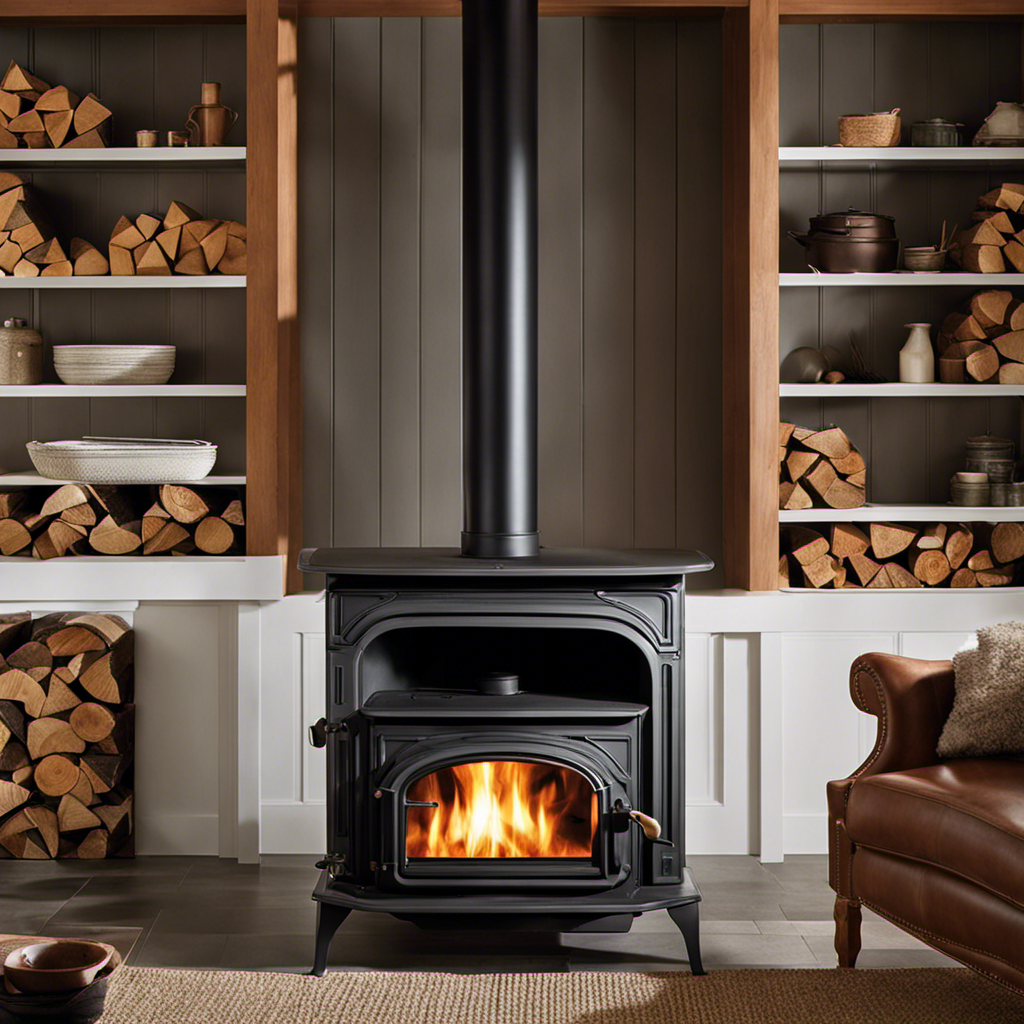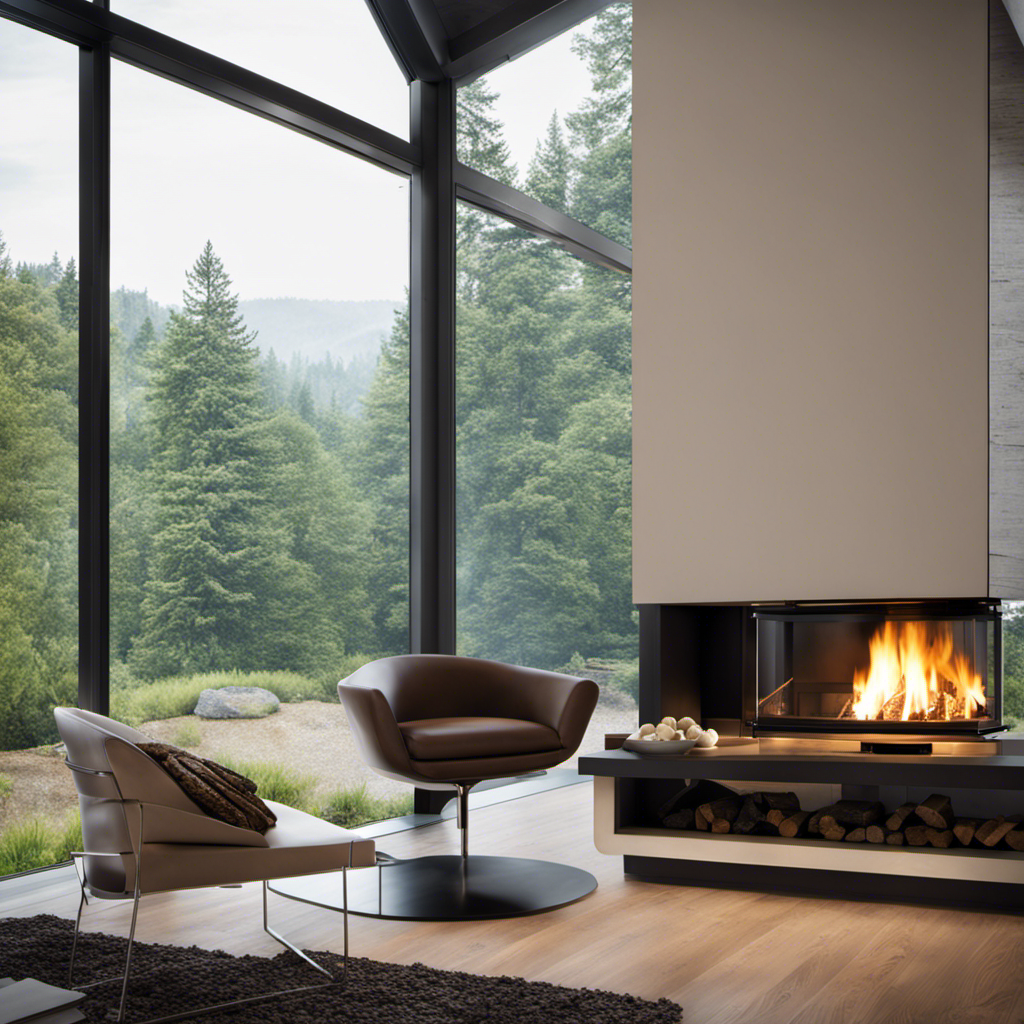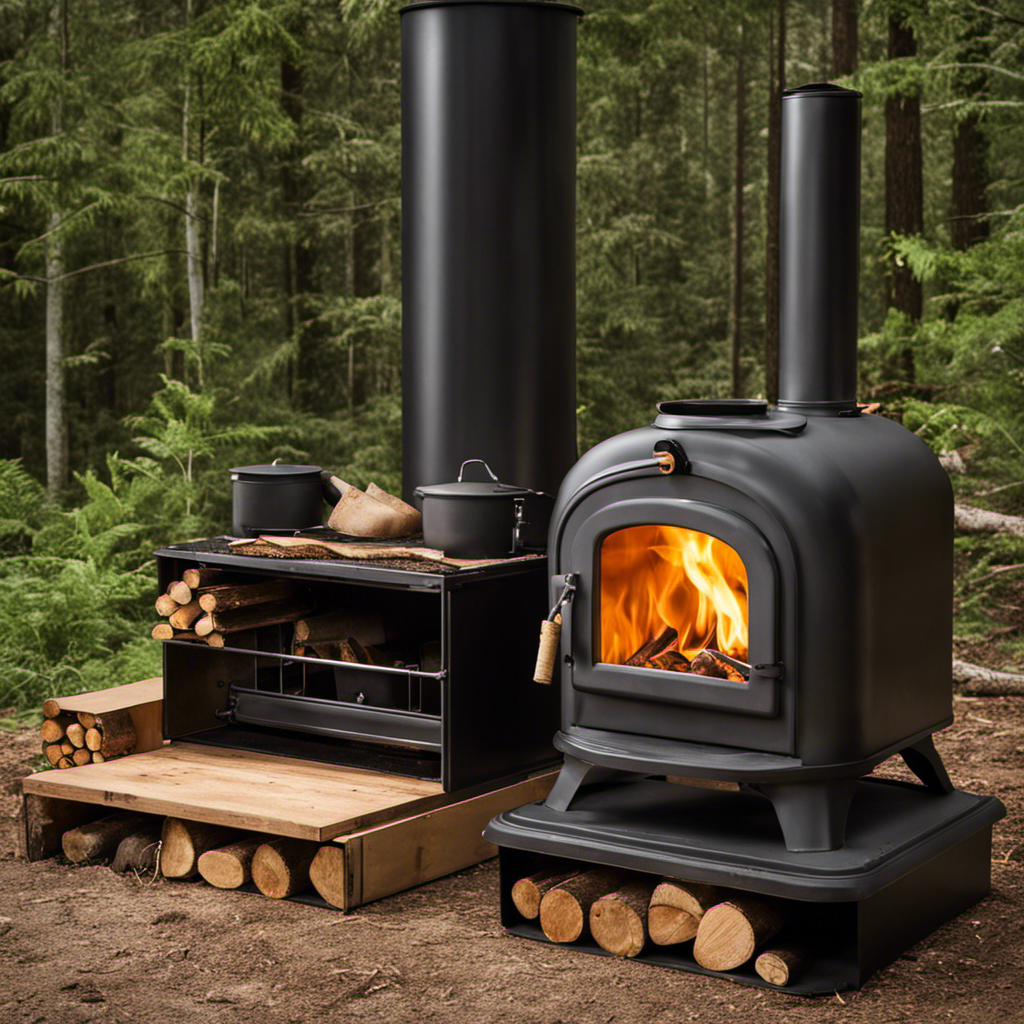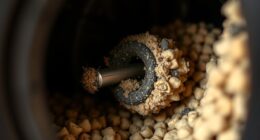
As a frequent user of a wood stove, I am always impressed by the advanced technology of a wood stove fan. It’s incredible how it efficiently utilizes thermal energy to evenly spread warmth in a room.
In this article, we’ll delve into the science behind these heat-powered devices, explore the inner workings of a wood stove fan, and discover how to choose the perfect one for your needs.
Get ready to unlock the secrets of this ingenious technology!
Key Takeaways
- Wood stove fans harness the heat generated by the wood stove to power their movement.
- They distribute heat more evenly throughout the room, preventing hot spots.
- Wood stove fans improve the overall efficiency of the wood stove by circulating the warm air.
- They are eco-friendly and do not require electricity to operate.
The Heat-Powered Technology Behind Wood Stove Fans
I love learning about the heat-powered technology behind wood stove fans. These fans operate based on the principles of thermodynamics, harnessing the heat generated by the wood stove to power their movement.

The benefits of wood stove fans are numerous. Firstly, they help to distribute the heat more evenly throughout the room, preventing hot spots and ensuring maximum comfort. Additionally, they improve the overall efficiency of the wood stove by circulating the warm air, reducing the need for additional fuel consumption.
Wood stove fans are also eco-friendly, as they don’t require any electricity to operate. Instead, they utilize the temperature difference between the hot stove surface and the surrounding air to generate the necessary power. Understanding the thermoelectric generator is crucial in comprehending the inner workings of these fascinating devices.
Understanding the Thermoelectric Generator
The thermoelectric generator plays a vital role in converting temperature differences into electricity in wood stove fans. It is a device that utilizes the Seebeck effect, where a temperature gradient across a material generates an electric voltage. This voltage can then be used to power the fan, providing efficient heat distribution in a wood stove.
One of the key factors in the performance of a thermoelectric generator is its efficiency. Higher efficiency means that more of the temperature difference can be converted into electricity. This is important as it allows for better utilization of the available heat energy and ultimately leads to a more effective wood stove fan.
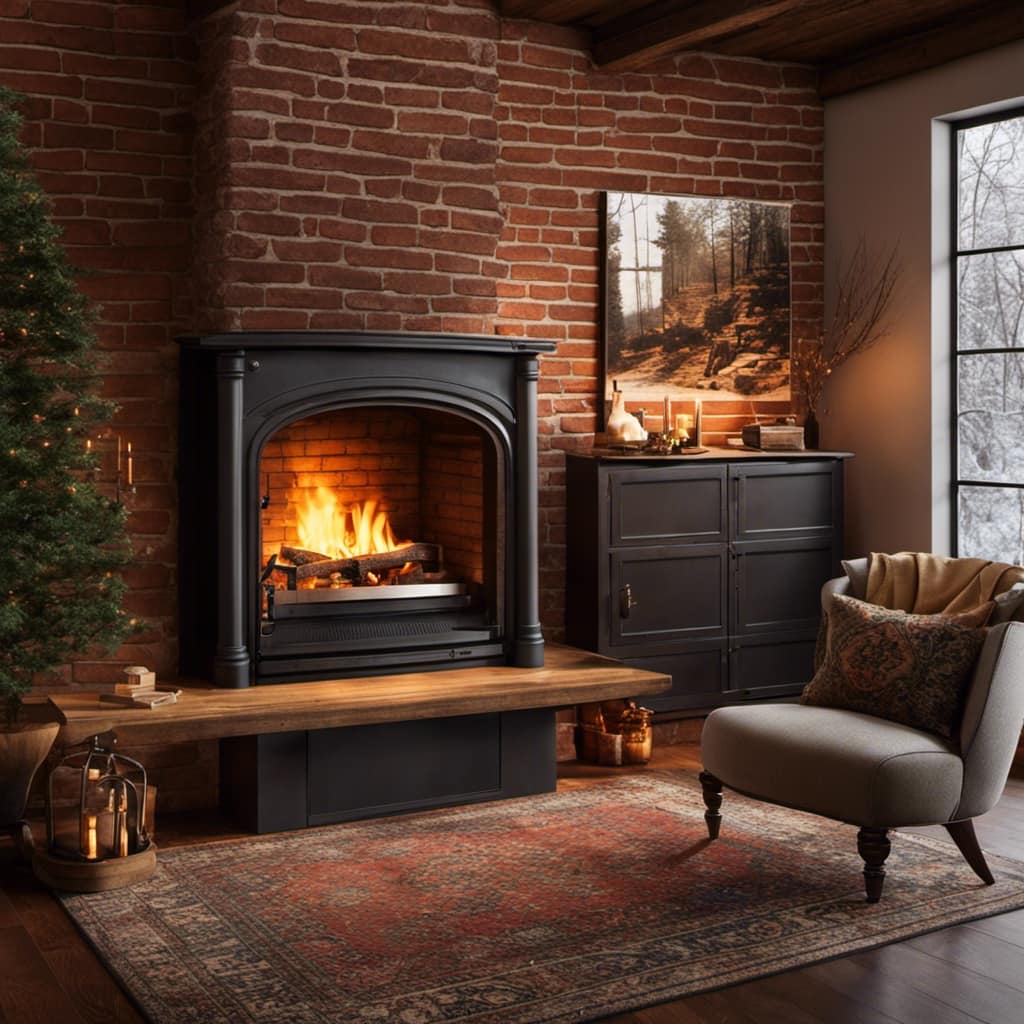
In terms of applications, thermoelectric generators have a wide range of uses beyond wood stove fans. They can be found in waste heat recovery systems, automotive exhaust systems, and even in space exploration, where they power spacecraft by converting the temperature difference between the hot side and cold side of the generator. This versatility makes thermoelectric generators an exciting area of research and development, with potential for significant advancements in energy conversion technologies.
| Advantages | Disadvantages |
|---|---|
| High reliability | Limited efficiency |
| No moving parts | High cost |
| Environmentally friendly | Limited power output |
| Compact and lightweight | Limited temperature range |
| Long lifespan | Materials constraints |
| Low maintenance |
Airflow Optimization: How Wood Stove Fans Enhance Heat Distribution
Wood stove fans increase heat distribution by optimizing airflow and ensuring the efficient circulation of warm air throughout the room. This is achieved through a combination of airflow patterns and heat distribution techniques.
Here are five key benefits of using wood stove fans:
-
Improved warmth: By enhancing the airflow patterns, wood stove fans help to distribute heat more evenly, ensuring that every corner of the room is comfortably warm.
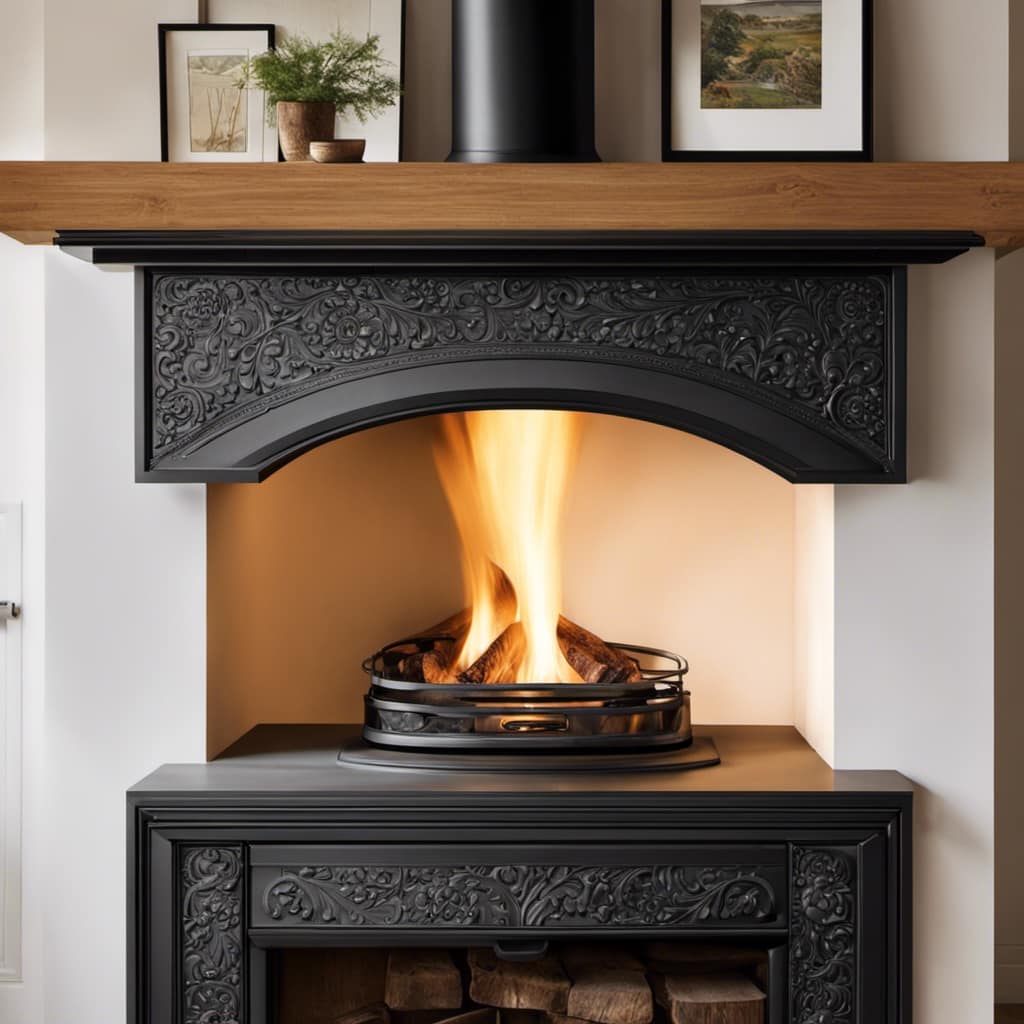
-
Energy efficiency: With better heat distribution, wood stove fans allow you to maximize the use of your wood stove’s output, reducing the need for additional heating sources and saving energy.
-
Faster heating: The optimized airflow created by wood stove fans helps to heat up the room faster, providing quick warmth and comfort.
-
Reduced fuel consumption: By effectively circulating warm air, wood stove fans help to reduce the amount of fuel needed to maintain a desired temperature, saving you money on heating costs.
-
Enhanced comfort: With improved heat distribution, wood stove fans create a cozy and comfortable environment, making your time spent around the wood stove more enjoyable.
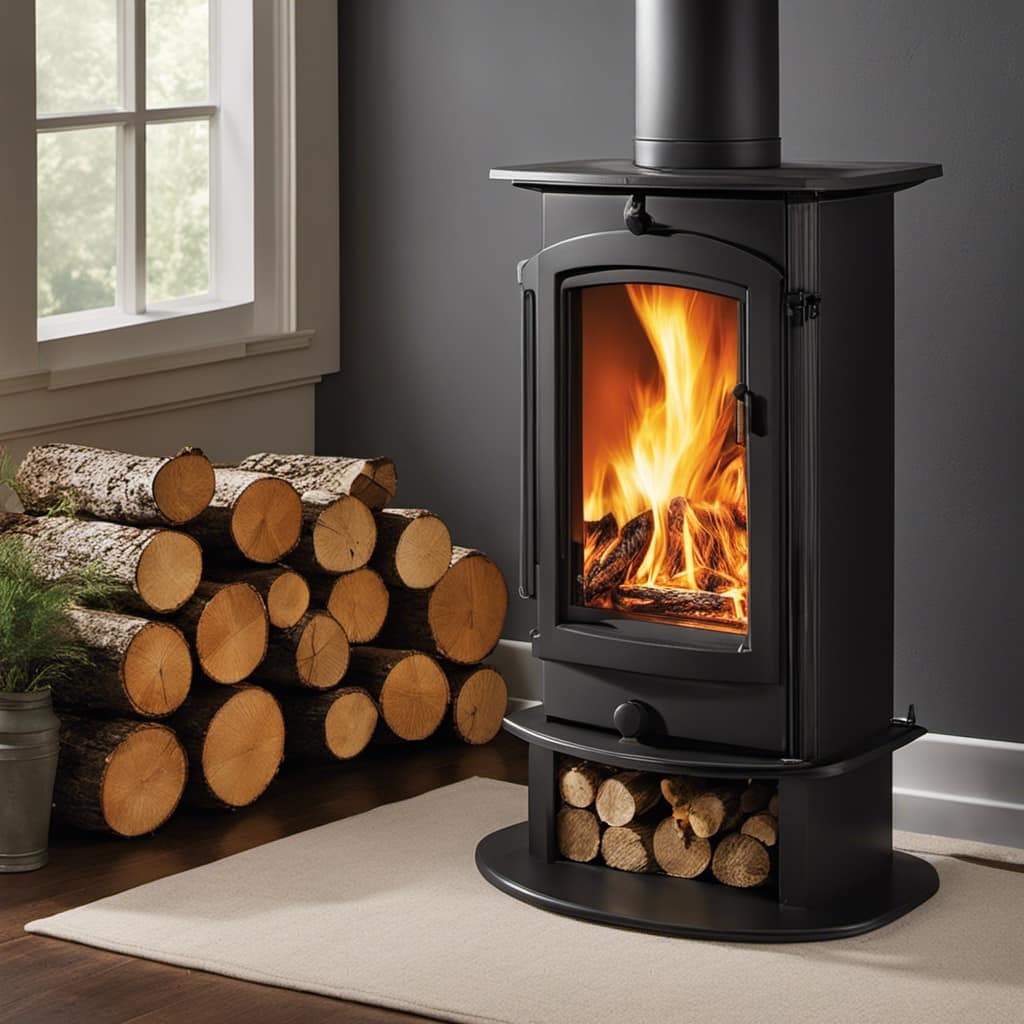
Factors affecting the performance of wood stove fans include the fan size, blade design, placement, and the overall efficiency of the wood stove itself.
Factors Affecting the Performance of Wood Stove Fans
One factor that significantly affects the performance of wood stove fans is the efficiency of the stove. The efficiency of a wood stove refers to how well it converts fuel into heat. A more efficient stove will produce more heat with less fuel, which in turn allows the fan to distribute more warm air throughout the room.
Efficiency improvements can be made by ensuring proper insulation, using dry and seasoned wood, and maintaining a clean stove. Insulation helps retain heat and prevents it from escaping through the walls of the stove. Dry and seasoned wood burns more efficiently, producing more heat. Regular maintenance, including cleaning the stove and chimney, ensures optimal performance and prevents the build-up of creosote, which can reduce efficiency.
Following these maintenance tips and making efficiency improvements will maximize the performance of wood stove fans.

Choosing the Right Wood Stove Fan for Your Needs
When choosing a wood stove fan, it’s important to consider factors such as size, noise level, and heat distribution. A well-functioning wood stove fan can greatly enhance the efficiency and effectiveness of your wood stove, providing increased heat distribution throughout your space.
However, like any mechanical device, wood stove fans require regular maintenance to ensure optimal performance. Here are some tips for wood stove fan maintenance and troubleshooting common issues:
- Clean the fan blades regularly to remove any dust or debris buildup.
- Check the fan motor for any signs of wear or damage and replace if necessary.
- Lubricate the fan motor bearings to reduce friction and noise.
- Inspect the fan belt for any signs of wear or stretching and replace if needed.
- Ensure that the fan is properly installed and securely mounted to avoid vibration or noise issues.
Frequently Asked Questions
How Much Noise Does a Wood Stove Fan Make While Operating?
While operating, a wood stove fan can generate noise, but the level of noise can vary depending on the specific model. It is important to consider wood stove fan efficiency and how noise can impact the overall user experience.
Can a Wood Stove Fan Be Used on Any Type of Wood Stove?
Yes, a wood stove fan can be used on any type of wood stove. The compatibility is determined by the fan’s size and heat resistance. Using a wood stove fan improves heat distribution, increases efficiency, and reduces energy consumption.

Are Wood Stove Fans Safe to Use Around Children and Pets?
Wood stove fans are generally safe to use around children and pets, as long as they are properly installed and maintained. However, there are alternative options, such as electric fans, that may be a safer choice in households with young children or curious pets.
What Maintenance Is Required for a Wood Stove Fan?
Maintaining a wood stove fan requires regular cleaning to ensure optimal performance. This involves removing dust and debris from the blades and lubricating the motor. It’s important to follow the manufacturer’s instructions for proper maintenance.
Can a Wood Stove Fan Be Used in Conjunction With Other Heating Sources, Such as a Fireplace or Electric Heater?
Yes, a wood stove fan can be used in conjunction with other heating sources like a fireplace or electric heater. It helps to improve heat distribution and energy efficiency by circulating warm air throughout the room.
Conclusion
After delving into the intricacies of wood stove fans and understanding the technology behind them, one might expect a revolutionary solution to enhance heat distribution.

However, the reality is quite the opposite. Despite their technical advancements, wood stove fans still heavily rely on the simple principles of thermoelectric generators and airflow optimization.
So while they may not be groundbreaking, these fans remain an effective and efficient choice for improving the warmth and comfort of your living space.
Growing up surrounded by the vast beauty of nature, Sierra was always drawn to the call of the wild. While others sought the comfort of the familiar, she ventured out, embracing the unpredictable and finding stories in the heartbeat of nature.
At the epicenter of every remarkable venture lies a dynamic team—a fusion of diverse talents, visions, and passions. The essence of Best Small Wood Stoves is crafted and refined by such a trio: Sierra, Logan, and Terra. Their collective expertise has transformed the platform into a leading authority on small wood stoves, radiating warmth and knowledge in equal measure.




